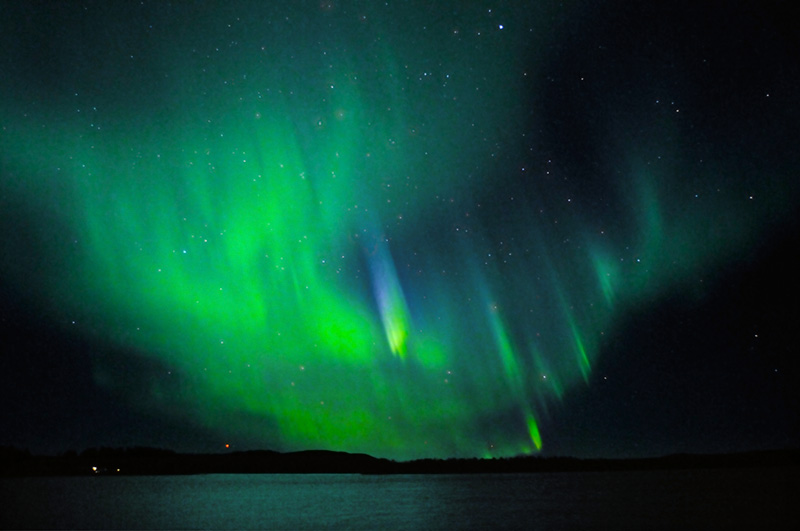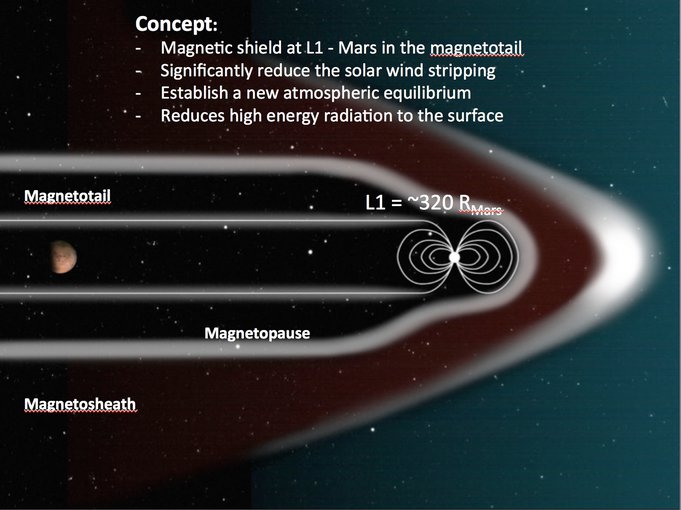What the project is all about and what it will be
Solar wind barrages onto our atmosphere every second. It consists of charged particles, which get heavily influenced by the magnetic fields of earth and sun. The interaction between solar wind and the earthly magnetic field results in the wonderful phenomenon of polar lights. A well more hidden effect of the earthly magnetic field is its protection aspect. It deflects and redirects the charged solar wind particles, which otherwise might strip away our atmosphere. Once again we can thank our planet for the Home it provides to us.

When we look up to the sky, we find a planet which lived this fate. Our neighborly planet Mars is assumed to have a significant atmosphere a long time ago. It might have lost it due to many erosion effects, of which the drag of the solar wind is one of.
As I learned about the eroded and lost natural Mars atmosphere I was very sad, because it essentially makes any future terraforming efforts worthless. Without a magnetic field any artificial atmosphere on Mars would erode just like its natural one.
For a long time I thought terraforming Mars would be impossible and our closest neighbor cannot be a Home for us. One day in the far past of my life I heard from an idea, which stuck with me. James Green from NASA proposed at the NASA Planetary Science Vision 2050 Workshop the concept of a powerful magnet placed at the L1-Lagrange point between Sun and Mars. It would act as a shield for the Martian atmosphere. I was intrigued, kept the idea for a long time and began to search for more but did not find satisfying results.

While there are proposals for this topic, as far as I know nobody actually analyzed the solar wind as source of the problem. Any designs orientate heavily at the structure of the earthly magnetic field. I want to deep dive into the plasma dynamics of the solar wind to maybe find a more efficient solution. The scope of Project Nahual is a comprehensive proposal for a Martian solar magnet shield.
For a first step I wanted to have an accurate description about solar wind. The most promising dataset is the one given by the WSA-Enlil model from the NOAA. I created a visualizer, which goes beyond the basic 2D one provided. However like I mentioned in the last blog article I will probably need a dataset specific for this purpose as well as a deep understanding of the model itself to advance in this project.
Apart from technical problems like having a magnetic field, which might need the size of a planet, or modeling the solar wind accurately enough, a realization would require huge investments. Because of this a practical project scope is far out of reach for me. Nevertheless I want to add to our understanding of our solar system. In the spirit of the always welcoming space community I want to share my ideas and my progress, even if I possibly will not find a feasible or even doable solution.
Join me, ask me, discuss with me or just read. Our fascination for the stars shines bright and I am happy to be here.
All sources, articles and pictures to download: On Project Nahual.zip
Direct link to article and comments: https://nahual.eu/on-project-nahual/
